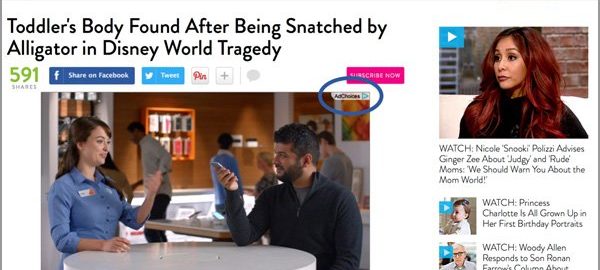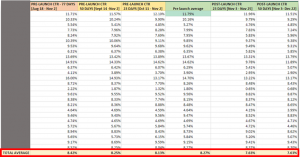If 85% of all ad dollars in television or in print went to two companies, sirens would be ringing — but all anyone in this space wants to talk about is programmatic.
What makes this so alarming is that the eyeballs are there. Traditionally, that’s the issue with any struggling media — the consumers aren’t there — but that’s never been the problem with online publishers.
Fraud, non-human traffic and viewability issues are mild symptoms at best. If those issues went away tomorrow, 85% of all digital ad dollars would still not be spent on premium publishers.
So what’s the problem?
Premium publishers are selling audience targeting instead of promoting the value in targeting ad creative based on where ads are seen.
First, here’s why audience targeting isn’t working:
1. It brings premium publishing’s value down to a lowest common denominator.
Selling target audiences and then arguing about the quality of the data puts premium publishers in the same boat with a Web site created last night.
2. Then there’s this:

3. It makes consumers feel bad.
In that exact moment when consumers are targeted based on their behaviors and see an ad disconnected from the content they are reading, they feel stalked. Some get over it; many more do not. This will only get worse as cross-device tracking gets better, and you get a Costco ad served on your desktop after using your phone GPS to drive to and from Costco.
Bottom line: People don’t want their privacy exposed, and audience targeting does that.
The biggest reason, however, why leading with audience targeting isn’t working for premium publishers is that it puts them in a ring with an 800-pound, audience-targeting gorilla.
Facebook is one of the two companies that grab that 85% of all digital dollars. That’s because Facebook shows up at agencies with an ocean of fresh data. Premium publishers walk in afterwards with what must look a small and stale pond to buyers. When premium publishers sell audience targeting, they reinforce Facebook’s strengths.
So what’s the solution? Search and ye shall find.
Google of course is the other company that, combined with Facebook, grabs most of the digital ad dollars.
Search advertising is really quite simple. It matches ad creative to the content where the ad is seen.
Sure, there is audience data to segment users, but the driving force behind search advertising success is that the ad creative is dynamically targeted to the content. Search for “dried flowers” and you get a page of dried flower content, with ads featuring dried flowers in their ad copy. It’s a perfect match.
Obviously, premium publishers do not sell “search terms,” but they do have consistent content sections. Display-ad creative for a brand that runs in “news and politics” should be different from that brand’s ad creative running in “sports” — and different even if it runs in an article about tennis versus golf.
The television ad campaign Geico is currently running (“It’s what you do”) changes when it runs in movie theaters. The last part becomes “When you are in a movie theater, you turn off your phone. It’s what you do.”
This is a great example of a client using creative and placement to strike that perfect balance when advertisers recognize where they are meeting the consumer, without making consumers feel as if they were watched on their walk over.
Can premium publishers (and buyers for premium advertisers) steward clients to start matching up creative to the content where consumers meet their ads?
The industry has the tech to deploy endless creative rotations, and if both publishers and agencies promoted this value, it would pump more creative dollars — and hence talent — into digital display ads.
The single biggest reason, however, why publishers should pivot their targeting abilities to match ad creative to content — versus selling targeting audiences — is that it sets them up for a battle they can win.
The path to turning this around for premium publishers is very simple. They must find a way to grab dollars back from either Facebook and/or Google. Fighting FB with audience targeting is a losing proposition. Fighting the company that sells text-link ads targeted to content gives premium publishers a fighting chance.
(36)
Report Post





